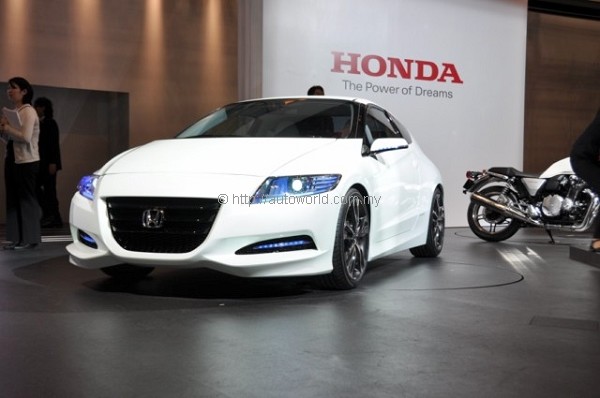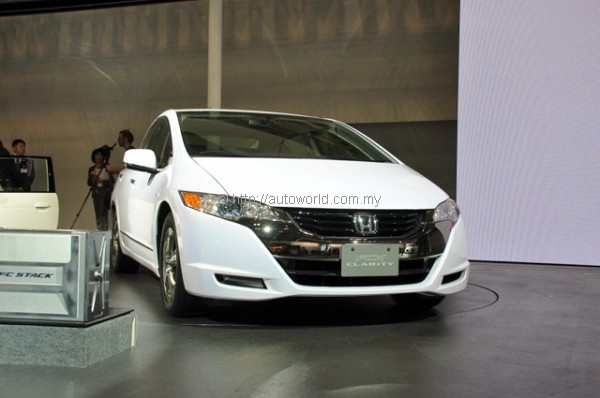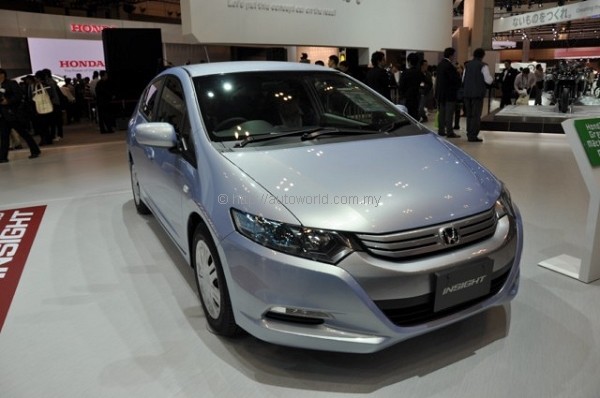Honda’s New Concepts – 41st Tokyo Motor Show 2009
The 41st Tokyo Motor Show 2009 was again held at Makuhari Messe, a huge exhibition complex made up of many huge halls in Chiba Prefecture, very near to Tokyo’s Narita Airport. The recent economic crisis had a depressing effect on the show participants; in previous shows, you could see just about everybody in the automotive business here, but this time, there were no European makers, and neither were the Americans there at all. There were two exceptions, however; Caterham, a very small kit car company showed up, taking a small area with three or four cars on display, and there was a booth for Lotus, which technically speaking, is Malaysian, although the Evora on centre stage may have come from England. BMW, Mercedes, Audi, Volkswagen, Volvo, Citroen, Peugeot – were not t o be seen at all. The Korean car makers stayed away as well.
The turn out on press day, 21st October 2009, was also considerably smaller, consisting mostly of local Japanese press, and mostly ASEAN journalists invited by the Japanese car companies. My own attendance at the Motor Show was uncertain; usually the invites are out from as early as March or April, but this time, I only got to know I was going about three weeks before the event, and in a roundabout kind of way. My hosts this time, as it has been for the past four Tokyo Motor Shows, was again Honda Malaysia and Honda Motor Company, Japan.
The Honda booth was one of the biggest stands at the show, with a mixture of new cars and concept cars on display; this time the motorcycles were put on show together with the cars, whereas previously, all the motorcycles were in a separate section, a subtle reminder that there are still some tough times ahead.
According to Mr. Takanubo Ito, President and CEO of Honda Motor Company Japan, the market has recovered to an extent that the banks are beginning to see light at the end of what has been a very dark tunnel, but he believes that it will still be some time before the liquidity spreads downwards to the consumer, to prompt the purchase of new vehicles in big numbers. He agrees that the Cash for Clunkers schemes have helped in some ways in the sales of Honda cars, and the worst is over, but it will be some time before the good times are here again.
Honda’s theme this time around is mobility, focusing on eco-friendly machines running on clean energy, either hydrogen or electricity, produced from solar power, and goes beyond the scope of just automobiles; personal mobility at home, and on the streets is also covered. Of particular interest is a very small gizmo about two feet high, shaped like two round discs joined together, one on top of the other. This strange machine, which Honda calls the U3-X seems to defy the laws of gravity, being able to stand upright on its own; uses technologies developed through the ASIMO bipedal humanoid program.
Honda also showcased its self-developed compact and lightweight fuel stack, one of the key components in the FCX fuel cell vehicle that runs on hydrogen, which combusts with oxygen, and the byproduct or exhaust is water. On display at the booth was the FCX Clarity, which runs on electricity generated by combining hydrogen and oxygen. The future for Honda seems to be in its compact fuel stack, proudly displayed in front of the FCX. The fuel stack is the main stage where the reaction between hydrogen and oxygen takes place to produce the electricity to drive the next generation Honda car.
In the interim period, whilst developing its Fuel Cell cars, Honda has hybrid energy regenerative engines that are more eco-friendly than conventional engines, with smaller capacity engines that run with the Honda IMA system to provide as much torque and power as a much larger engine, yet are more economical. Malaysian motorists are likely to get the Honda Insight, which runs a 1.3 litre hybrid engine. As part of our tour, we visited the Honda factory at Suzuka, where we saw the Insight being rolled out on the production line at the rate of one every fifty seconds or so. We also had the opportunity on the last day to drive the new Insight at the Motegi Twin Ring Racing circuit. There are some new technologies incorporated into the design of the hybrid system of the Insight, which we should be able to provide an insight into (pun intended) later on.
Honda also introduced the new CR-Z Concept 2009 car, giving a preview of what’s next on the menu for Honda lovers. The CR-Z concept represents Honda’s proposal for a new hybrid sports model. Equipped with a six-speed manual transmission and a 1.5 litre i-VTEC engine, the CR-Z promises a fun to drive experience coupled with outstanding fuel economy. The compact, lightweight Honda IMA hybrid system is packaged within an advanced form based on a ‘low, short and wide’ design concept. Plans are afoot for a production model to be launched in February 2010.
Another interesting exhibit at the Honda booth is the Skydeck hybrid. The Skydeck is a study model focused on the concept of ‘freely expanding’ opportunity and fun in people’s lives, featuring great flexibility in space utility. Funky doors that slide open and upwards enables extreme ease of entry and exit. Seat and interior materials are revolutionary in design, and offer versatility for transporting large families or moving large articles.
Of note is the Step WGN, which has the largest interior space in its class and offers best-in-class fuel economy. Of more interest is the Freed, a six to seven-seater MPV slightly smaller than the Honda Stream. The current model on sale in Japan features a 1.5 litre engine, and a little bird tells me that it will soon be available in Malaysia. It won’t be long before Malaysians can look forward to an MPV priced lower than the Stream.
A more interesting piece of news to young car buffs would be the Civic Type R Euro, a really nice and sporty-looking hot hatch, due to be introduced in Japan in November, which is just a couple of weeks away. The Type R Honda range has always delivered extremely sporty and high performance; this is a car that will find its way into the country somehow.
The most interesting piece of news that I gleaned from this trip would be Honda’s direction for the future. There are no statements or news releases, but it appears to me that Honda believe that their future lies in their fuel cell technology; it will of course depend on whether the ‘top up’ infrastructure, in particular the hydrogen refill stations, much like the gas stations we have today, are forthcoming, but one day, the Honda performance cars will be powered by hydrogen. The writing is on the wall; zero pollution, tremendous torque, with instantaneously responsive power on tap.
If everything works out the way Honda plans it, we may be able to see some high performance fuel cell vehicles. Let’s hope this Honda dream becomes reality!
































































